Cheyenne

Brief Synopsis
Cast & Crew
Raoul Walsh
Dennis Morgan
Jane Wyman
Janis Paige
Bruce Bennett
Alan Hale
Film Details
Technical Specs

Synopsis
In 1867, in Laramie, Wyoming Territory, Wells Fargo agent Webb Yancey coerces gambler James Wylie to search for an outlaw known as "the Poet," who has been robbing Wells Fargo shipments. In return for Jim's capture of the Poet, Yancey promises that Nevada criminal charges currently facing Jim will be dropped, and he will earn a reward. On the way to Cheyenne, where it is rumored that the Poet is forming a gang, Jim shares the stagecoach with Emily Carson and Ann Kincaid. Before they reach Cheyenne, the stage is attacked by the Sundance Kid and his gang, who are furious to discover an empty strongbox containing only a poem from the Poet. That evening at the saloon, where Emily is a singer, Jim spots some of the men in the gang and follows them to their hideout. There, Jim pretends to be the Poet. Sundance then discloses that Ann, the Poet's wife, is also at the hideout. Ann goes along with Jim's deception because, as she later explains, she wants to see the Poet captured as much as he does. Sundance is still skeptical of Jim's claims, however, and assigns some of his men to follow Ann and Jim. To convince the gang that he is really Ann's husband, Jim spends the night at Ann's, but sleeps on her couch. Unknown to Jim, Ann's husband is Ed Landers, a Wells Fargo employee. After Ann warns Landers that he is being followed, he promises to stop stealing and leave for San Francisco with her in three days. Using a ruse, Ann lures Jim to a nearby town, where they are followed by Sundance's men. When Sundance and his men try to rob a stage and again find a note from the Poet, Sundance grows suspicious of Jim, and in the ensuing gunfight, three of Sundance's gang are killed. Realizing that Ann has doublecrossed him, Jim returns to town and, not knowing Landers' true identity, reveals to him that he is working for Yancey. Jim then asks the sheriff to order the livery stable not to rent any horses, hoping this will force the Poet into the open. Learning that earlier a woman had purchased a mare from the stable, Jim watches the horse to see who now owns it. Meanwhile, Landers convinces the sheriff that Jim is really the Poet. When Ann again visits Landers, she smells Emily's distinctive perfume and rightly suspects that her husband is planning to leave town with Emily rather than with her. Ann discovers that Emily is leaving on the evening stage and buys a ticket, as does Jim, who has seen Landers on the mare. Jim shoots Landers when he attempts to hold up the stage. Subsequently, Yancey tells Jim that until he finds the stolen money, he is not entitled to the reward for the Poet's capture. Jim is about to despair, but before Ann leaves town, she throws two bags from the stage. When Jim investigates, he finds the missing money and then rides happily after Ann, with whom he has fallen in love.

Director

Raoul Walsh
Cast

Dennis Morgan
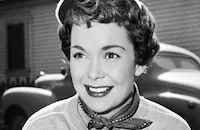
Jane Wyman
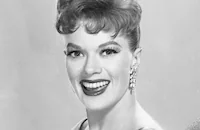
Janis Paige

Bruce Bennett

Alan Hale
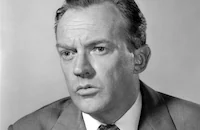
Arthur Kennedy

John Ridgely
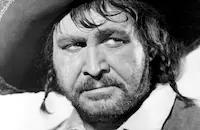
Barton Maclane
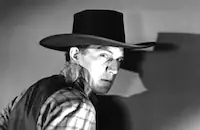
Tom Tyler

Bob Steele
John Compton

John Alvin
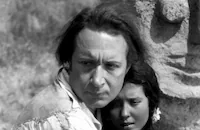
Monte Blue
Ann O'neal
Tom Fadden
Britt Wood
Jack Norman

Ray Teal

Kenneth Macdonald
Robert Filmer
Lee "lasses" White
Philo Mccullough
Carl Harbaugh
Houseley Stevenson
Jasper Palmer
Clancy Cooper
Jamesson Shade
Hubert Brill
Benny Corbett
Artie Ortego
Bob Alderette
Crew
Milo Anderson
Robert Buckner
Reggie Callow
Leo F. Forbstein
Hugo Friedhofer
Oliver S. Garretson
Sid Hickox
M. K. Jerome
Ted Koehler
H. F. Koenekamp
Alan Le May
John Maxwell
Jack Mcconaghy
William Mcgann
Christian Nyby
Ted Smith
Max Steiner
Max Steiner
Jack L. Warner
Paul I. Wellman
Perc Westmore
Thames Williamson

Film Details
Technical Specs

Articles
The Wyoming Kid -
By Glenn Erickson

The Wyoming Kid -
Cheyenne aka The Wyoming Kid
Heading up the ensemble cast, and no stranger to the Western genre, is Arthur Kennedy, who despite his penchant for playing macho types (in movies like Bad Men of Missouri (1941) and Air Force (1943), was actually a classically trained actor who began his career bringing Shakespeare to the masses on a Globe Theatre Company tour of the Mid-West. Kennedy's introduction to Hollywood has a mythic quality to it; he made his first screen appearance in the 1940 film City of Conquest, after being hand picked off a L.A. stage by James Cagney. The actor cast Kennedy as his own brother in the film. Arthur Kennedy would rack up five Oscar nominations (with no wins) in his years in Hollywood and appeared in such prestigious projects as Lawrence of Arabia (1962). But his biggest successes were on the stage. In fact, Kennedy's association with playwright Arthur Miller included memorable parts for him as the original John Proctor in The Crucible and Biff in Death of a Salesman, a role that won him a Tony.
Along with Kennedy, veteran character actor Alan Hale figures prominently in Cheyenne. Hale originally had designs on being an opera singer but got his movie break in 1911 as a slapstick comedian. He spent the 1920's playing mostly villains, with the notable exception being his Little John to Douglas Fairbanks' Robin Hood (1922). It was a role Hale would repeat two more times in his career, again with Errol Flynn in 1938 and finally opposite John Derek in Rogue's of Sherwood Forest (1950). Rogue's of Sherwood Forest proved to be his final film (He died in 1950 while working on the Warner Bros. Western Montana). But movies weren't Alan Hale's only passion. He was also an enthusiastic inventor, who held the patent or helped finance the creation of items from auto brakes to hand held fire extinguishers to greaseless potato chips. And according to Leonard Maltin's Movie Encyclopedia, Hale also managed to bring his two loves together by inventing the folding theater seat.
Walsh chose Warner Brothers musical star Dennis Morgan to play the flashy gambler in Cheyenne. The actor, who was born Stanley Morner, made his first big Hollywood splash opposite Ginger Rogers in
So, while the impressive talents of the cast and director made Cheyenne only a modest success, the movie enjoyed a longer life on the small screen. A TV series, of the same name, was loosely based on the film and starred Clint Walker and Cheyenne kept riding on ABC from 1955 to 1963.
Producer: Robert Buckner
Director: Raoul Walsh
Screenplay: Alan Le May, Thames Williamson
Art Direction: Ted Smith
Cinematography: Sidney Hickox
Editing: Christian Nyby
Music: M. K. Jerome, Ted Koehler, Max Steiner
Cast: Dennis Morgan (James Wylie), Arthur Kennedy (The Sundance Kid), Jane Wyman (Ann Kincaid), Janis Paige (Emily Carson), Bruce Bennett (Ed Launders), Alan Hale (Fred Durbin), Barton MacLane (Yancey), Tom Tyler (Pecos), Bob Steele (Bucky), John Alvin (Single Jack), Monte Blue (Timberline) .
BW-99m. Closed captioning.
By Stephanie Thames
Cheyenne aka The Wyoming Kid
Quotes
Trivia
Notes
Studio press releases announced that Humphrey Bogart was to star in this film and that Zachary Scott was also assigned to a starring role. A May 3, 1946 Hollywood Reporter news item reported that John Alvin replaced Clifton Young in the role of "Single Jack" when the latter was taken ill. The Variety review noted that many exterior scenes were shot in Arizona, substituting for Wyoming.















